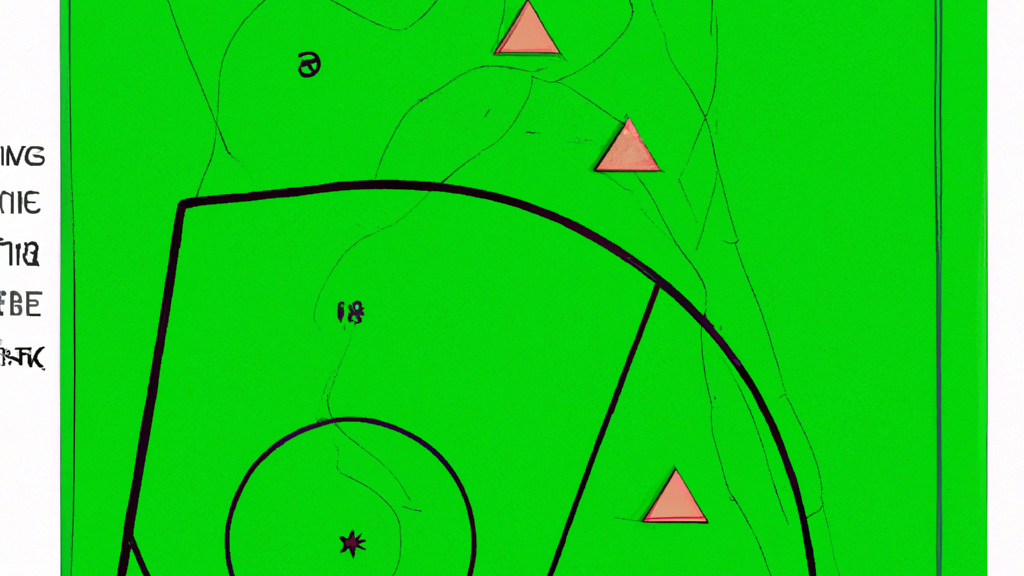THE ART OF GOLF COURSE DESIGN: HOW TO CREATE A WORLD-CLASS COURSE
Golf course design is an art form that requires a keen eye for detail, a deep understanding of the game, and a passion for creating a world-class course. Whether you’re a golf enthusiast, a country club member, or a professional golfer, you know that the quality of the course can make or break your experience. A well-designed course can challenge and inspire players, while a poorly designed one can frustrate and disappoint them.
In this blog post, we’ll explore the art of golf course design and provide tips on how to create a world-class course that will impress players of all levels. From selecting the right location to designing challenging holes, we’ll cover everything you need to know to create a course that will stand the test of time. So, whether you’re a seasoned golf course designer or a beginner looking to create your first course, read on to learn how to create a world-class golf course that will leave players in awe.

THE ART OF GOLF COURSE DESIGN: HOW TO CREATE A WORLD-CLASS COURSE
Golf course design is an art form that requires a deep understanding of the game of golf, the natural landscape, and the needs of the golfers who will play on the course. Creating a world-class golf course is a complex process that involves a range of factors, from the layout of the holes to the placement of hazards and the selection of grasses and other vegetation. In this article, we will explore the key elements of golf course design and offer tips on how to create a course that will challenge and delight golfers of all skill levels.
The first step in designing a world-class golf course is to understand the game of golf itself.
Golf is a game of strategy and skill, and the best courses are those that require players to use both. A great golf course should offer a variety of challenges, from long, open fairways to tight, tree-lined holes. It should also have a mix of hazards, such as bunkers, water hazards, and rough, that require players to think carefully about their shots.
Another important factor in golf course design is the natural landscape.
A great golf course should be integrated seamlessly into the surrounding environment, taking advantage of the natural features of the land to create a challenging and visually stunning course. This might mean incorporating hills, valleys, and other natural features into the design of the course, or it might mean working with the existing vegetation to create a course that is both beautiful and functional.
One of the most important elements of golf course design is the layout of the holes.
A great golf course should have a variety of holes, each with its own unique challenges and opportunities. Some holes might be long and open, while others might be short and tight. Some might require players to hit over water hazards or bunkers, while others might require precision shots to avoid trees or other obstacles.
In addition to the layout of the holes, the placement of hazards is also critical to the success of a golf course.
Hazards such as bunkers, water hazards, and rough should be strategically placed to challenge players and force them to think carefully about their shots. For example, a bunker might be placed in front of the green to force players to hit a high, soft shot, while a water hazard might be placed to the side of the fairway to force players to choose between a risky shot over the hazard or a safer shot to the other side.
Another important element of golf course design is the selection of grasses and other vegetation.
The type of grass used on a golf course can have a significant impact on the playability of the course, as well as its appearance. For example, Bermuda grass is a popular choice for golf courses in warm climates because it is drought-resistant and can withstand heavy foot traffic. Bentgrass, on the other hand, is a popular choice for courses in cooler climates because it is more tolerant of cold temperatures.
Finally, the overall aesthetic of the golf course is also an important consideration in golf course design.
A great golf course should be visually stunning, with a mix of natural and man-made features that create a sense of beauty and tranquility. This might mean incorporating water features, such as ponds or streams, into the design of the course, or it might mean using landscaping to create a sense of depth and texture.
So how do you go about creating a world-class golf course? The first step is to work with a team of experienced golf course designers who can help you to understand the unique challenges and opportunities of your site. This might involve conducting a site analysis to identify the natural features of the land, as well as any potential hazards or obstacles.
Once you have a clear understanding of the site, you can begin to develop a preliminary design for the course. This might involve sketching out the layout of the holes, as well as the placement of hazards and other features. It is important to work closely with your design team to ensure that the course is both challenging and playable, and that it takes advantage of the natural features of the land.
Once you have a preliminary design in place, you can begin to refine the details of the course. This might involve selecting the type of grasses and other vegetation that will be used on the course, as well as choosing the materials for the bunkers, tees, and other features. It is important to pay close attention to the details of the course, as even small changes can have a significant impact on the playability and aesthetic of the course.
Finally, once the course is complete, it is important to maintain it properly to ensure that it remains in top condition. This might involve regular mowing and watering, as well as the occasional renovation or redesign to keep the course fresh and challenging for golfers.
In conclusion, golf course design is a complex and challenging art form that requires a deep understanding of the game of golf, the natural landscape, and the needs of the golfers who will play on the course. Creating a world-class golf course requires careful planning, attention to detail, and a commitment to excellence. By working with an experienced team of golf course designers and paying close attention to the details of the course, you can create a course that will challenge and delight golfers of all skill levels for years to come.

- Nicklaus Design – The world’s acknowledged leader in golf course …
With an unparalleled record of producing the most championship golf courses. Nicklaus Design is synonymous with world-class course design. The most respected … - Tiger Woods will design ‘world class’ Park City golf course
Feb 7, 2023 … “The partnership between Marcella and TGR Design is one based on a love of golf and dedication to creating an experience that is both … - Tiger Woods designing new golf course near Park City, Utah
Feb 7, 2023 … In a tweet, Tiger shared his excitement about the new golf course and about building a world-class experience for all skill levels. - Private Golf Course | Sedona Arizona – Seven Canyons Golf
He rode horseback through the mesmerizing landscapes of Seven Canyons to envision a world-class course with a timeless sensibility, designing without any … - Golf Course Design: The Art of Creating a Golf Course – The Left …
Golf course architecture is an art and something that takes a ton of creativity to accomplish. What makes this sport so great is that no two courses are alike … - TGR Design: Home
Led by Tiger Woods, TGR Design is a full-service golf course design firm … Design courses are crafted in a thoughtful and deliberate manner to create fun, … - Tiger, Johnny Morris Partner On TGR Design’s First Public Golf Course
Apr 18, 2017 … … that includes plans to create the first-ever public access golf courses designed by TGR Design, a world-class championship golf course … - Great Northern Golf Course now open, becoming Nicklaus Design’s …
Jul 14, 2017 … The global golf course design firm founded by Jack Nicklaus is widely … “With Great Northern, we wish to create a unique course where … - First Nicklaus Heritage Course Breaks Ground In The Bahamas
2 days ago … “Nicklaus Design is proud to have been selected to create a world-class golf course on this property.” The golf course design team will be led … - World-class Palo Alto golf course architect to renovate Alameda …
4 hours ago … Construction on the North Course is expected to start in June by Robert Trent Jones II Golf Course Architects, which has created 280 courses in …
Fun facts about The Art of Golf Course Design: How to Create a World-Class Course
- The first recorded game of golf was played in Scotland in the 15th century.
- Golf is one of only two sports to have been played on the moon (the other being javelin).
- The longest hole in professional golf is the 7th hole at Satsuki Golf Club in Japan, measuring a whopping 964 yards.
- Augusta National Golf Club, home of The Masters tournament, was originally an indigo plantation before it became a golf course.
- In some countries like China and North Korea, playing golf used to be illegal due to its association with Western culture and elitism.
- Professional golfer Tiger Woods has won more than $120 million dollars throughout his career from prize money alone.
- Country clubs were originally exclusive social clubs for wealthy individuals who wanted access to recreational activities like tennis and swimming as well as dining facilities and networking opportunities with other affluent members of society





